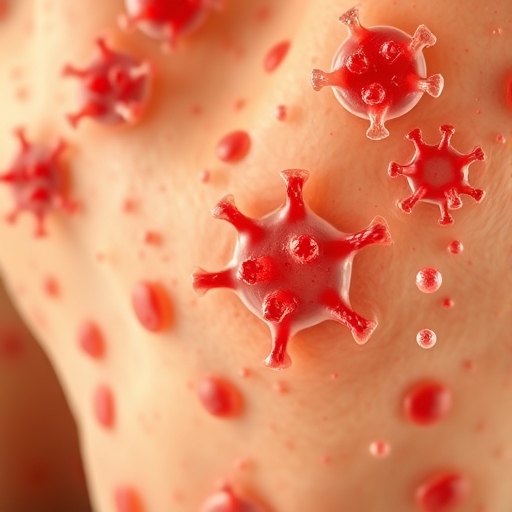Introduction
Staph infections, caused by the Staphylococcus bacteria, are some of the most commonly encountered bacterial infections in humans. These bacteria are part of the normal flora in our bodies, often found on the skin or in the nose of healthy individuals. However, under certain conditions, these bacteria can cause various infections ranging from mild skin issues to life-threatening diseases. Understanding staph infections, including their causes, symptoms, treatment, and prevention, is crucial for effective management and reduction of risk.
What are Staph Bacteria?
Staphylococcus aureus is the most notorious species of the staphylococci group. This round-shaped bacterium can appear in clusters resembling grapes when viewed under a microscope. While not all strains of Staphylococcus aureus are pathogenic, some can lead to severe infections. Methicillin-resistant Staphylococcus aureus (MRSA) has garnered significant attention due to its resistance to standard antibiotics, making infections difficult to treat.
Types of Staph Infections
Staph bacteria can lead to various infections, categorized generally into skin and soft tissue infections, systemic infections, and toxin-related illnesses.
- Skin and Soft Tissue Infections:
- Boils: Painful pus-filled lumps that form around hair follicles.
- Impetigo: A highly contagious skin infection commonly affecting children.
- Cellulitis: A deeper skin infection leading to swelling, redness, and pain.
- Abscesses: Pockets of pus that form within tissues.
- Systemic Infections:
- Osteomyelitis: An infection of the bone.
- Endocarditis: Infection of the heart valves.
- Sepsis: A life-threatening response to infection affecting the whole body, potentially leading to organ failure.
- Toxin-related Illnesses:
- Food Poisoning: Caused by ingesting food contaminated with staph toxins, leading to gastrointestinal symptoms.
- Toxic Shock Syndrome: A rare but severe condition linked to toxin-producing strains of Staphylococcus aureus.
Causes and Risk Factors
Staph infections can develop in healthy individuals but are more prevalent in certain conditions. The primary mode of transmission is through direct contact with infected wounds, skin, or surfaces. Factors that may increase an individual’s risk include:
- Weakened Immune Systems: Conditions like diabetes, cancer, or chronic illness reduce the body’s ability to fight infections.
- Recent Surgery or Hospitalization: Exposure to healthcare settings increases the likelihood of encountering MRSA.
- Close Skin-to-Skin Contact: Athletes involved in contact sports are particularly susceptible.
- Poor Hygiene: Inadequate cleanliness can elevate the risk of infection.
- Crowded Living Conditions: Environments such as dormitories or shelters can facilitate the spread of staph bacteria.
Symptoms
Symptoms of staph infections vary based on the type and severity of the infection. Common signs include:
Skin Infections:
- Redness and swelling at the infection site
- Pain or tenderness
- Warmth
- Pus or drainage from bumps or blisters
- Fever in more severe infections
Systemic Infections:
- High fever
- Chills
- Fatigue
- Rapid heart rate
- Confusion (in severe cases)
In the case of food poisoning, symptoms can appear rapidly, often within hours, and may include nausea, vomiting, stomach cramps, and diarrhea.
Diagnosis
Diagnosing a staph infection typically involves a physical examination and medical history assessment. In some cases, laboratory tests may be performed, including:
- Culture Tests: Swabs from infected areas or blood samples are analyzed to identify the presence of Staphylococcus aureus.
- Sensitivity Testing: Especially relevant for MRSA, tests determine which antibiotics are effective against the specific bacterial strain.
Treatment
Treatment of staph infections varies based on the type and severity of the infection. Common therapies include:
- Antibiotics: The type of antibiotic prescribed often depends on whether the infection is methicillin-sensitive or methicillin-resistant. For mild skin infections, oral antibiotics may be sufficient. However, more severe infections may require intravenous (IV) antibiotics.
- Drainage: In cases of abscesses or boils, draining the pus can be crucial in managing the infection and alleviating symptoms.
- Supportive Care: For systemic infections, additional supportive care may be necessary, including intravenous fluids and medications to stabilize blood pressure.
Complications
While many staph infections can be treated effectively, some can lead to severe complications, particularly in high-risk individuals. These complications can include:
- Sepsis: A life-threatening condition that can arise from untreated infections, leading to widespread inflammation and multi-organ failure.
- Pneumonia: If the bacteria invade the lungs, particularly in individuals with weakened immune systems.
- Endocarditis: Infection of the heart valves, requiring prolonged treatment and sometimes surgical intervention.
Prevention
Preventing staph infections involves several strategies focused on hygiene and reduced exposure. Some effective preventive measures include:
- Hand Hygiene: Regular handwashing with soap and water or using alcohol-based hand sanitizers, especially before eating or after using the restroom.
- Wound Care: Keeping cuts and scrapes clean and covered to prevent infection.
- Avoiding Sharing Personal Items: Towels, razors, and sports equipment should not be shared.
- Cleaning Surfaces: Regularly disinfecting shared spaces, especially in gyms and locker rooms.
- Awareness in Healthcare Settings: Following infection control protocols, including contact precautions, can minimize the risk of MRSA and other staph infections.
Conclusion
Staph infections, while often manageable, pose significant health risks, particularly for vulnerable populations. Understanding the nature of these infections, their symptoms, methods of transmission, and treatments is critical for effective prevention and management. By practicing good hygiene and being aware of risks, individuals can significantly reduce their likelihood of staph infections. Ongoing education and awareness are vital in combating this prevalent and sometimes dangerous group of bacteria. If an infection is suspected, seeking medical attention promptly can prevent complications and promote successful outcomes.
